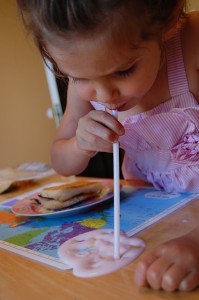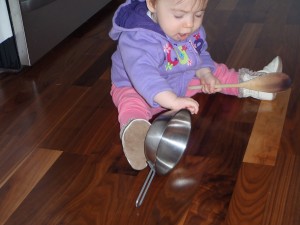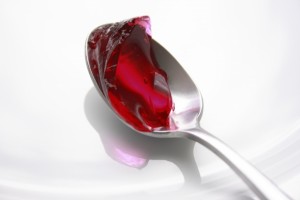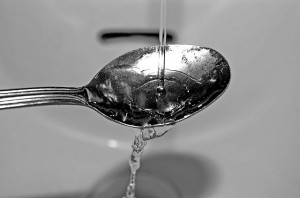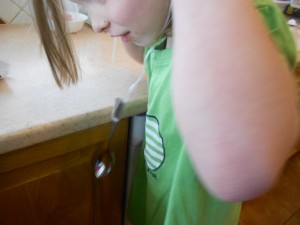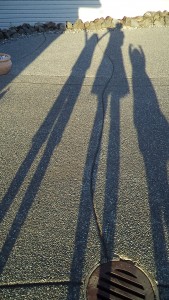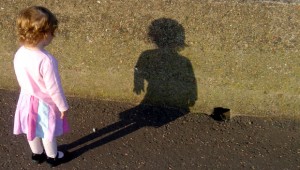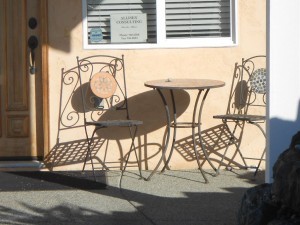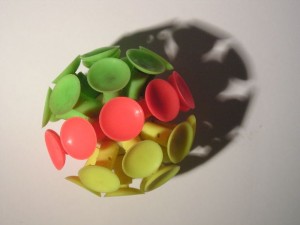Kids discover all on their own lots of science fun with straws so they become another great choice for a homemade science kit and easy science experiments.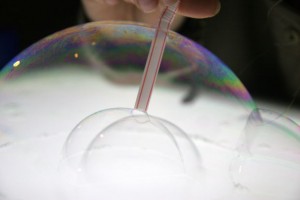
Sometimes, before they are a year old, babies will figure out how to sip from a straw. Figuring out how to blow in a straw takes longer, but once kids do, any beverage is an invitation to add bubbles. Or, just a sink of soap.
Some science can be quieter than sucking up the very last bit or turning it into a volcano of bubbles, but it is science nevertheless. Why do table manners and science fun have to be such opposites, although we can use this science to help clean up accidental spills on the table or counter. Or may be some of them are not quite so accidental? Well, it’s neater than licking it off…
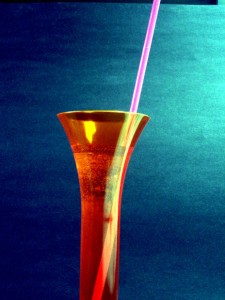 Play with straws includes lots of science. In a drink with lots of bubbles, the straw will bob up and down. Children can also have fun holding a liquid in a straw even when they take it out of the glass of cup. This means holding one’s breath and possibly putting a finger on the bottom of the straw before taking it out of the mouth. Much later in school, kids will hear the scientific terms of atmospheric pressure, but we can tell them when they ask us the inevitable why that air is pushing up and holding the liquid in. When we take away our finger or mouth the air can push down again.
Play with straws includes lots of science. In a drink with lots of bubbles, the straw will bob up and down. Children can also have fun holding a liquid in a straw even when they take it out of the glass of cup. This means holding one’s breath and possibly putting a finger on the bottom of the straw before taking it out of the mouth. Much later in school, kids will hear the scientific terms of atmospheric pressure, but we can tell them when they ask us the inevitable why that air is pushing up and holding the liquid in. When we take away our finger or mouth the air can push down again.
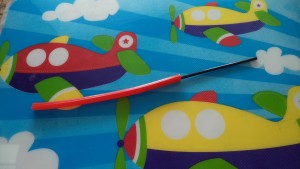 Kids can experiment with propulsion with just two straws, one small and one big. Make sure the small straw slides easily in and out of the big one. It’s fun to hold the big straw up and down and just drop the little one in to see if it falls all the way through. This requires some tricky coordination as well. If the straw doesn’t get stuck, kids can try blowing the small straw right out of the big one.
Kids can experiment with propulsion with just two straws, one small and one big. Make sure the small straw slides easily in and out of the big one. It’s fun to hold the big straw up and down and just drop the little one in to see if it falls all the way through. This requires some tricky coordination as well. If the straw doesn’t get stuck, kids can try blowing the small straw right out of the big one.
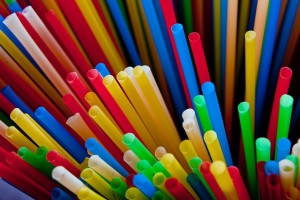 **Remind them not to aim at their little brothers and sisters or anyone else and we don’t do this in restaurants.** We tried to get a picture of the little straw shooting outbut that coordination was even trickier. Above is a simple photo of the big straw, partially loaded with the little one ready to go.
**Remind them not to aim at their little brothers and sisters or anyone else and we don’t do this in restaurants.** We tried to get a picture of the little straw shooting outbut that coordination was even trickier. Above is a simple photo of the big straw, partially loaded with the little one ready to go.
Science equipment and play for kids does not need to be complicated or expensive. For lots of science fun with straws, maybe get a whole pack?

